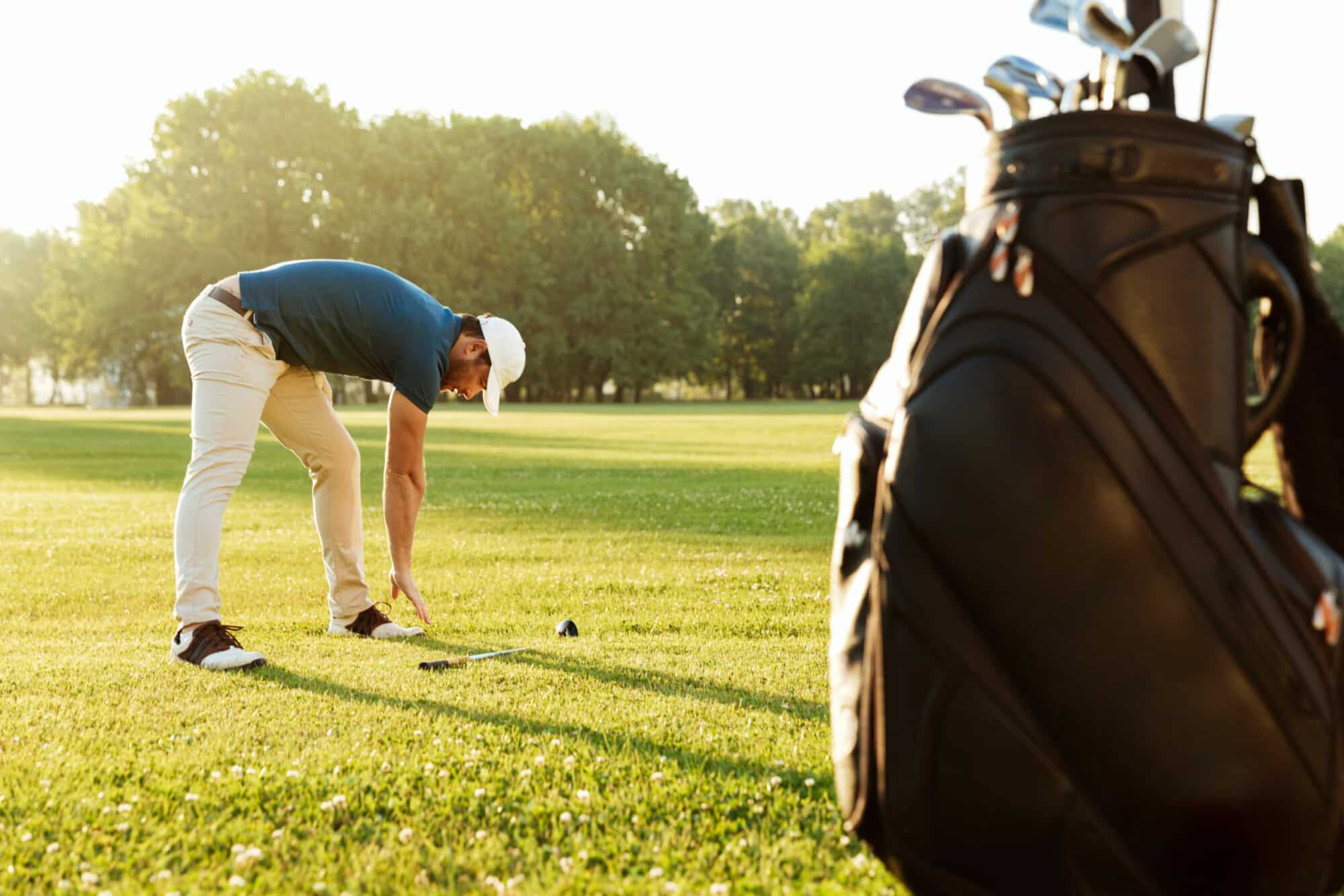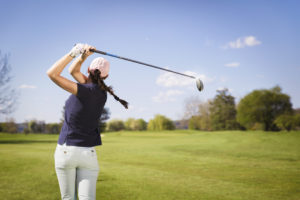
As a golfer, you always want to be better and strive to perfect your drives, putts, chips, or any other swing in your game.
There are various ways to improve your golf game. You may buy the latest and greatest clubs, take lessons with a golf coach, or play more rounds. However, for your performance to be the best it can on the links, you should be in good shape.
Cross-training for golf with certain exercises and following best practices for recovery can help you become fit and strong on the green. Remember, the club doesn’t swing itself. Your body swings the club that determines the fate and final resting place of the ball.
Below, learn about exercises and recovery routines that can help you cross-train for golf, move in golf-specific ways, prevent injuries, and improve your golf game.
Warm Up and Stretch to Improve Flexibility
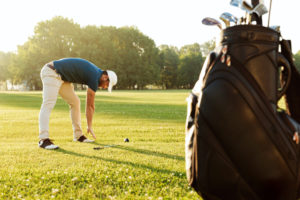
Warming up is important for any sports activities. When you play a round of golf, it is a good practice to warm up and stretch before hitting the links, allowing your muscles to activate and loosen up.
Having a stretching routine as part of your cross-training for golf can also ensure the body gets stronger and improves flexibility, which can help with your golf swing.
Here are five simple stretches that can help you get loose and limber – and better your golf game:
- Twist Stretch can loosen up your hamstrings and lower back.
- Hip Press can relieve pressure on your lower back.
- Scarecrow Twist can help the spine and prepare the body to swing a golf club.
- Standing Side Stretches can open the chest and diaphragm muscles, loosen the spine, and alleviate back pain and tightness.
- Shoulder Flossing can reduce stiffness in the back, neck, and shoulder and can help to increase the range of motion in your shoulder.
Practice Yoga for Stability and Concentration
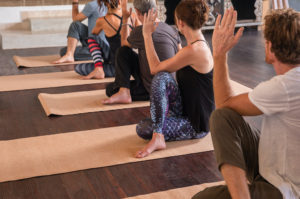
Golfers should be thinking about the shot they want to play, the distance of their target, and their club selection. However, poor posture or aches and twinges in the back or knee may take up your mental space, distracting you from your swing and the game.
To help hone your mental concentration, practice yoga off the course as part of your cross-training for golf. The breathing exercises that go along with yoga can help keep your mind calm and improve your focus on the game.
A regular yoga practice can also improve your stability and balance, encouraging you to stay grounded on the green, and establish a better center for gravity – ideal for improving your golf swing.
Try these three poses when you cross-train for golf to help optimize and maximize your performance on the course:
- Revolved Crescent Lunge: a rotation of the spine combined with an intense hip flexor on the straight leg and a deep stretch of the outer hip of the bent leg.
- Half Lord of the Fishes Pose: a twisting pose for creating a balance between the left and the right sides of the body, for opening up the chest, torso, and tight hips.
- Bird Dog or Kneeling Balance: excellent for improving the core strength, balance, and coordination.
Strength Train to Add Power and Speed to Your Swing
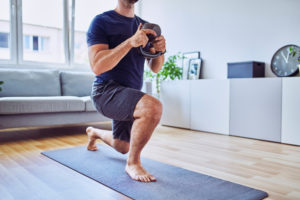
Using your upper body to swing the club may be successful on the course, but you may not be playing to your full potential. A powerful swing involves a rotation of your hips, spine, and shoulders.
Cross-train for golf by adding conditioning exercises that focus on the movement patterns required for a golf swing. This will help your core and upper body operate on the same page, in sync, which can help you develop a fast and powerful golf swing.
These cross-training for golf exercises can help increase the strength and power of your golf swing and improve your golf game:
- Seated Rotations can improve your rotational mobility, which is a key component of the golf swing.
- 90/90 Stretch helps improve your shoulder range to increase your swing rotation, power, and speed. This exercise can also increase your ability to move your shoulders separately from your hips.
- Squat with med ball rotation targets your glutes and obliques to help you have a controlled and powerful rotation. It is the foundation of transforming energy from a back swing.
- Rotational lunge variations animate the lower body and introduce mobility in the thoracic spine, mimicking a golf swing. The golf fitness platform GOLFWOD shared via Instagram (@golf.wod) two variations of rotational lunges to try.
- Mini-band walk variations require the use of a resistance band to help strengthen the typically weakest part of a golfer’s body – the core.
Rest and Recover After a Long Golf Round
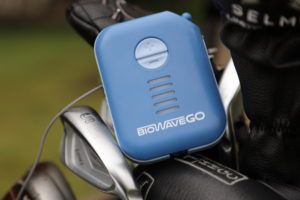
Golf may not always be a physically demanding sport, but a long day on the course can take a toll on both your body and mind. Recovery is a crucial part of cross-training for golf so you can minimize downtime and spend more time on the links.
Incorporating the following routines as you cross-train for golf can help you recover after a round of golf and improve the next one:
Foam roll to help reduce the soreness of muscles after a big day out on the links. Not sure how to use a foam roller? Sports and fitness instructor Andrew Hannon shared five foam rolling drills to complete after playing golf via Instagram (@ando_pfs).
Engage in these behaviors to help boost muscle recovery:
- Get adequate sleep and actively recover by doing gentle cross-training for golf activities, like walking.
- Hydrate well.
- Apply ice packs on sore areas or joints to combat pain or swelling.
- Wear compression apparel to minimize muscle soreness.
- Eat enough protein to rebuild muscle.
- Apply analgesic creams for muscle aches or take OTC anti-inflammatory medicine to help with acute muscle pain.
Optimize your muscle recovery for better golf performance with an electrotherapy device like BioWaveGO RX. This portable gadget – powered by BioWave’s patented pain blocking technology – helps relieve pain and inflammation for many athletes, including PGA champion Rocco Mediate:
“Since I discovered BioWaveGO, it’s now a part of my everyday routine and it travels with me on tour too. It’s the best treatment I’ve found for pain relief and inflammation and I’ve tried them all…it’s amazing!”
Incorporating electrotherapy into your cross-training for golf routine can aid your recovery, so you can spend more time working on your swing instead of resting your aching muscles. Now covered by insurance, learn how BioWave technology can benefit you.

